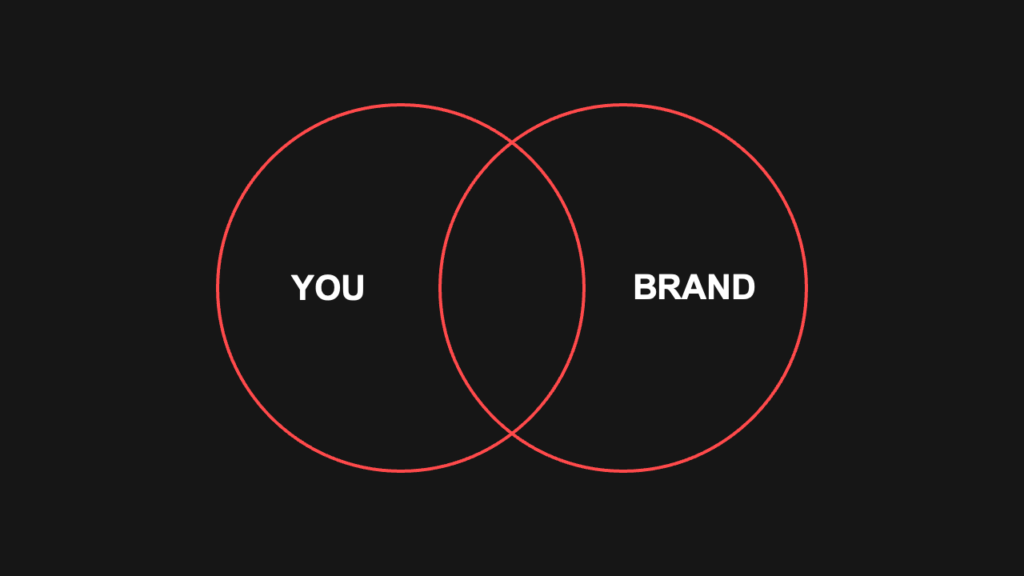Brands are Relationships: Get It Right In Two Steps
Category: Universal InsightsIn today’s market, branding transcends mere logos and taglines; it’s about creating relationships and stories that resonate with consumers on a personal level. This blog post delves into the essence of branding, how it intertwines with consumer identities, and how businesses can leverage these insights to build stronger relationships with their audience.
What is a Brand?
The question “What is a brand?” may seem straightforward, yet it yields numerous interpretations. According to the American Marketing Association, a brand is any distinctive feature like a name, term, design, or symbol that identifies goods or services. However, this definition often feels incomplete. Branding encompasses much more than visual elements or catchphrases. It embodies the entire experience and perception that consumers have with a company.
Academics Leslie de Chernatony and Francesca Dall’Olmo Riley conducted extensive research to understand the multifaceted nature of brands. They reviewed hundreds of papers from the marketing and branding space in academia and psychology. Their goal was to distill the essence of what constitutes a brand. Initially, they identified 12 core themes, but further expert interviews expanded this to 18 definitions. Ultimately, they arrived at a recommendation that “a brand is a multidimensional construct, matching a firm’s functional and emotional values with the performance and psychosocial needs of consumers.” This multiplicity underscores the complexity and depth of what a brand truly represents.
Despite these varied definitions, a common sentiment emerges: brands are deeply felt and recognized on an intuitive level. We may struggle to define a brand precisely, but we inherently know one when we see one. This intuitive recognition highlights the emotional and psychological connections that brands foster.
Brands as Relationships
Brands are more than just symbols or names; they are relationships. They exist in the space between an organization and its audience. A product or service alone doesn’t constitute a brand without this relational aspect. Brands, like relationships, provide structure and meaning to our lives. They become part of our identities, influencing how we perceive ourselves and how we present ourselves to the world.
Consider how we describe our interactions with brands. We use terms like trusted, loved, loyal, satisfied, and supported. These words are not just marketing jargon; they are descriptors of relationships. Just as we talk about our relationships with people, we speak about our connections with brands in similar terms. This relational perspective is crucial in understanding the true nature of brands.
Conversely, brands can also evoke negative emotions. Terms like betrayed, addicted, and frustrated highlight that these relationships can be fraught with tension and conflict. These negative experiences are equally telling, as they indicate the depth of emotional investment consumers have with brands. When a brand fails to meet expectations, the sense of betrayal can be as intense as in personal relationships.
The Inclusion of the Other in the Self
To understand this relationship, we can use psychological tools like the Inclusion of the Other in the Self scale. This scale measures how much someone else’s identity becomes a part of our own. When applied to brands, we see a similar overlap, indicating that people integrate brands into their identities. This overlap explains why some brands feel like an integral part of who we are, whether it’s the tech we use or the clothes we wear.
Psychologists use this scale to measure the closeness of relationships. Typically, it involves two circles representing the self and the other. The degree of overlap between these circles indicates the level of integration. In the context of branding, one circle represents the consumer, and the other represents the brand. A significant overlap suggests that the brand is deeply embedded in the consumer’s identity.

For example, an avid Apple user might identify strongly with the brand’s values of innovation and creativity. This identification goes beyond mere product usage; it reflects how the consumer sees themselves. The same principle applies to various brands across different industries. Whether it’s a sports brand like Nike or a luxury brand like Louis Vuitton, the degree of overlap signifies the strength of the relationship.
The Narrative Economy
In the narrative economy, people exchange money not just for goods and services but for the ability to tell a story. Brands help shape these stories, contributing to how people define themselves. The concept of the narrative economy suggests that consumers are not merely seeking functional benefits from products. Instead, they are looking for stories that they can integrate into their lives. These stories help them make sense of their experiences and shape their identities. Brands that understand this can position themselves as partners in their consumers’ personal narratives.
Consider the example of someone starting a fitness journey. They might purchase new running shoes, a fitness tracker, and athletic wear. These purchases are not just about the functionality of the products. They are about the story the consumer wants to tell themselves and others: “I am a runner. I am committed to my health.” Brands like Nike and Fitbit thrive in this narrative economy by providing products that support these personal stories.
Two Steps to Getting the Relationship Right
1. Understand Your Audience’s Story: To build strong brand relationships, you must understand your audience’s story. This involves going beyond demographics to grasp the hero’s journey they see themselves on, their goals, and the context in which they operate. This understanding helps in positioning your brand within their narrative meaningfully.
Understanding your audience’s story requires deep empathy and active listening. It’s about uncovering the underlying motivations and aspirations that drive their behavior. For instance, if you are in the business of providing microwaveable meals, you need to understand what dinner means to your audience. Is it a time for family bonding, a moment of relaxation, or simply a necessary task in a busy schedule?
Psychologist Dan McAdams emphasizes the importance of personal narratives in identity formation. He states, “If you want to know me, then you must know my story, for my story defines who I am.” By understanding the narratives that define your audience, you can better align your brand with their needs and desires. This involves identifying the hero in their story, their goals, and the challenges they face.
2. Find Your Role in the Audience’s Story: To effectively find your role in your audience’s story, you need to ask critical questions: How can you transform the hero in some way? Can you provide them with new tools and resources? Can you help them achieve goals they hadn’t considered? Can you make their journey easier or more rewarding?
Your brand is not the hero of your audience’s story—they are. Your role is to support them, providing tools, resources, and experiences that help them achieve their goals. By positioning your brand as a sidekick or enabler, you allow your audience to shine, thereby becoming a hero in their eyes. This perspective allows consumers to embrace your brand as part of their identity without feeling overshadowed. When brands focus too much on themselves, they risk alienating their audience. Instead, by supporting the consumer’s story, brands can create deeper, more meaningful connections.
The Responsibility of Shaping Stories
Branding in the narrative economy is not just an opportunity; it’s a responsibility. As marketers, we have a significant influence on the stories that consumers tell about themselves. These stories can impact their self-perception, behavior, and well-being. Therefore, it’s crucial to shape these narratives ethically and positively.
Consider the impact of advertising on body image. Brands in the beauty and fashion industries have the power to influence how people feel about their appearance. Ethical branding practices involve promoting positive body image and self-confidence rather than exploiting insecurities. Brands that take this responsibility seriously can foster healthier relationships with their audience.
Moreover, brands need to be mindful of the broader social implications of their narratives. For instance, campaigns that promote inclusivity and diversity can have a profound impact on societal attitudes. Brands like Dove and Nike have successfully incorporated these values into their narratives, promoting messages of self-acceptance and empowerment.
Conclusion
Branding in the narrative economy requires a deep understanding of the psychological relationships between brands and consumers. By focusing on the stories consumers tell about themselves and finding your brand’s place within those stories, you can create lasting, meaningful relationships. This approach not only enhances brand loyalty but also integrates your brand into the very fabric of your consumers’ identities.
As marketers, we have a responsibility to shape these stories ethically and positively, ensuring that the narratives our consumers tell because of us are ones we can be proud of. By doing so, we harness the true power of branding in the narrative economy.
Sign up for industry updates:
